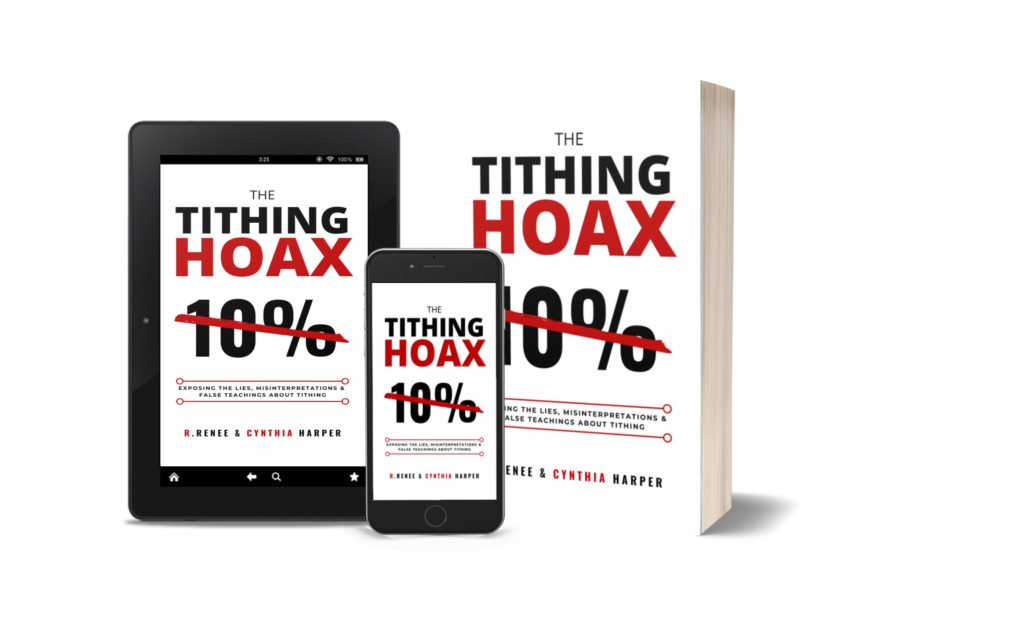Tithing is a doctrine of God? According to Bishop Oyedepo, it is. He’s the founder and leader of The Winners’ Chapel in Nigeria and claims tithing isn’t a church doctrine. He says it’s not a practice instituted by man. Based on this, he believes Christians must pay the church 10% of their income.
Well, he’s partly correct. The biblical tithe of crops and livestock isn’t a church doctrine. Why? Because God established that in the Bible. However, the modern tithe is a church doctrine. And the Bible and history prove it.
God didn’t require or accept money as payment for the tithe.
R. RENEE
Please note: A Ghanaian news outlet published comments Bishop Oyedepo has made about tithing. Over the next few weeks, I will deal with each statement. The point is to determine whether his teachings are true or false.
Let’s get into it.
Table of Contents
- Listen to Podcast
- Tithing in the Bible Revisited
- The Levitical Priesthood Ends
- The Father of Tithing in the Church
- Summary
- Break Free From the Tithe Deception
Listen to Podcast
Tithing in the Bible Revisited
Ancient Israel didn’t set aside 10 percent of their money (or income) and gave it to God. God didn’t request a monetary tithe. The tithe only consisted of crops and livestock (Leviticus 27:30 & 32, Deuteronomy 14:22). This is why the Israelite farmers and herders paid tithes, not the wage earners.
Israelites earning income from various occupations, such as:
- Servants
- Doctors
- Innkeepers
- Craftsmen
They also held government and military positions, among other vocations. However, these wage earners didn’t pay tithes. They received payment in various forms, including food, goods, silver, and gold coins (Genesis 29:15; Matthew 20:1-15; Luke 3:14).
God didn’t require or accept money as payment for the tithe. So, the Bible doesn’t support an income-based tithe.
The Levitical Priesthood Ends

The practice of tithing ended in 70 A.D. Why did it end? The ancient Hebrew Israelites gave the Levites tithes, livestock, and crops. The Levitical priests and their assistants oversaw the tabernacle and later the Temple (Numbers 1:50; 1 Chronicles 23). In other words, Israelites brought tithes to the tabernacle and Temple.
In 70 A.D., the Roman government went to war with the Hebrew Israelites. During this conflict, the Roman military destroyed the Second Hebrew Temple.
The destruction of the Temple ended the Levitical priesthood and tithe collections. This is important because the Lord set aside tithes for the Levites. Without the Temple and priesthood, there was no need to collect tithes. Additionally, the priesthood of Yeshuah Hamschiach (aka Jesus the Christ) replaced the Levitical Priesthood (Hebrews 4:14, Hebrews 7:11-17).
This historical fact explains why the New Testament doesn’t mention tithes. Remember, the New Testament begins with the book of Acts. From Acts to Revelation, the Bible doesn’t document Hebrew Israelites or the New Testament church practicing tithing in any form. The biblical tithe ceased with the destruction of the Hebrew (Jewish) Temple and Levitical priesthood.
R. RENEE
The biblical tithe ceased with the destruction of the Hebrew Temple and Levitical priesthood.
The Father of Tithing in the Church
The Biblical tithe of giving crops and livestock ended. The early Christian church didn’t pay any tithes for approximately 800 years. Then a tithing doctrine entered the picture. And this doctrine changed the biblical tithe of agricultural produce into money.
So, who made this change? Was it God or man?
It was a man. Specifically, it was Roman Emperor Constantine. As Rome’s ruler, he took over Christianity and the Christian church. So the church came under the authority of the Roman government. And this gave rise to the Roman Catholic Church.
Constantine introduced the monetary tithe. He imposed a mandatory 10% tithe (or tax) on Christians. In other words, believers had to pay 10% of their income to the Roman Catholic Church. And this money was mainly used to finance extravagant church buildings, among other things. So, the tithing in the church today originates from Roman Emperor Constantine, not the Most High.
Summary
Is tithing a doctrine of the church? Yes. God established the tithe of giving 10% of crops and livestock to the Levites. The tithe of paying 10% of your income to a church is a man-made doctrine.
Why?
First, God didn’t accept money for tithes. Second, tithing ended in 70 A.D. when the Romans destroyed the Hebrew (Jewish) Temple, and the Levitical priesthood ended. Finally, Roman Emperor Constantine imposed a 10% monetary tithe on Christians. And that’s the doctrine that’s practiced in the modern-day Christian church.
Break Free From the Tithe Deception

If you want to discover more tithe facts, I encourage you to get a copy of The Tithing Hoax. This book provides in-depth information on how to give the RIGHT way. It also offers helpful tips based on Scripture.
📌 DISCOVER THE TRUTH ABOUT TITHES PROSPERITY GOSPEL PREACHERS DON’T WANT YOU TO KNOW. 👉 👉Click this link
Thanks for reading, and be blessed!
Source: “Tithing Isn’t A Church Doctrine. It’s A Covenant Of The Kingdom” Bishop Oyedepo








